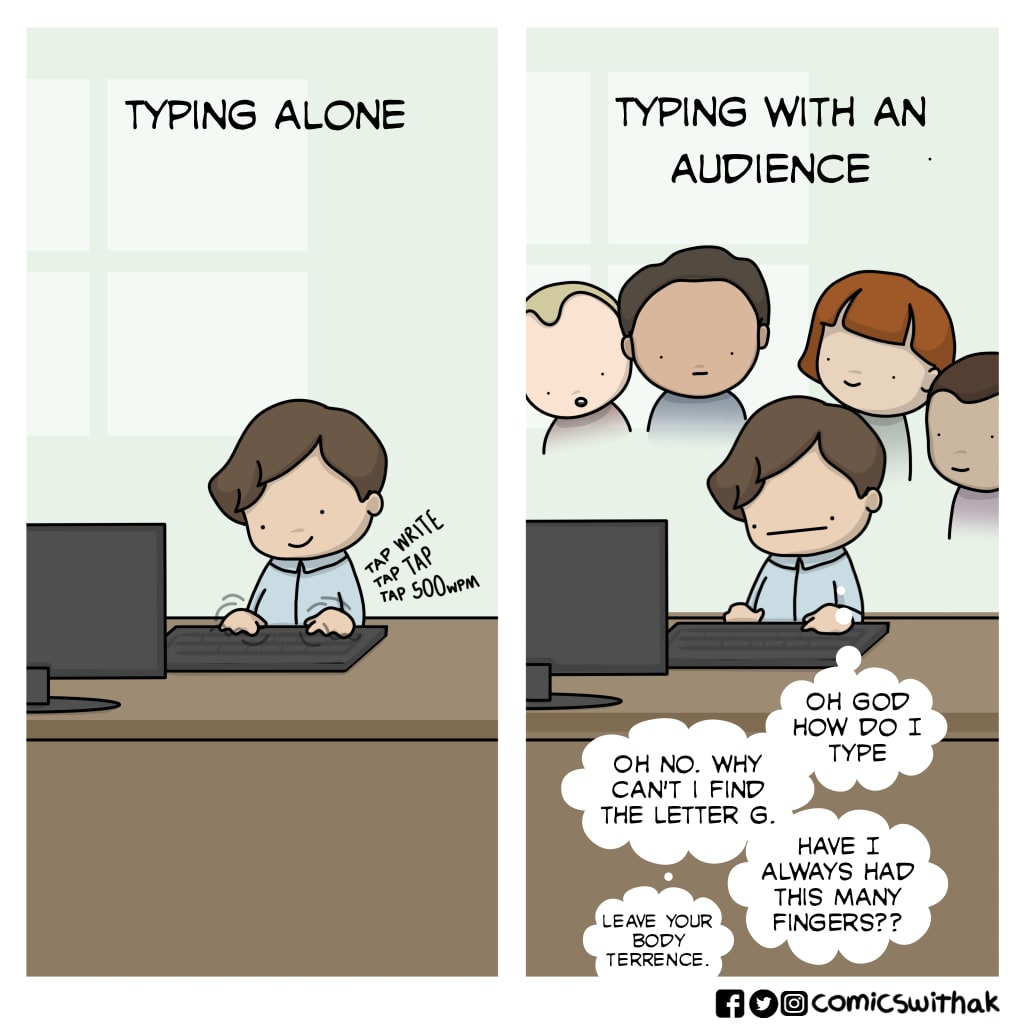One and Done: Why I Prefer Solo Programming
Exploring the Advantages of Independent Coding: A Personal Perspective on Solo Programming

As a software developer, I've had the opportunity to experience different ways of working, including solo programming and pair programming. While I can see the benefits of pair programming, I have found that I prefer to work on my own. In this blog post, I'll explain why I prefer solo programming and the advantages it has for me. One of the main reasons I prefer solo programming is that it allows me to focus on the task at hand. When working alone, there are fewer distractions, and I can work at my own pace. I find that I can get into a flow state more easily when working on my own, which leads to more productivity and better code quality. Another advantage of solo programming is that it gives me complete control over the codebase. When working alone, I don't have to worry about conflicting ideas or opinions, and I can make decisions quickly and efficiently. This allows me to take ownership of the codebase and feel more invested in the project. Additionally, solo programming allows me to work in a comfortable and familiar environment. I can set up my workspace in a way that suits my needs and preferences, which leads to a more enjoyable and productive experience. Of course, there are also downsides to solo programming. One of the main disadvantages is that it can be harder to bounce ideas off of others and get feedback. Additionally, working alone can lead to feelings of isolation and disconnection from the team. Despite these downsides, I have found that the benefits of solo programming outweigh the drawbacks for me. I prefer to work on my own because it allows me to focus, work at my own pace and take complete ownership of the codebase. While pair programming may work well for others, I have found that solo programming is the best fit for me.
The Awkwardness of meeting new people
Meeting new people during pair programming can be an awkward experience for some people, especially if they are introverted or shy. It's natural to feel nervous or uncomfortable when working with someone you don't know well. However, with time and practice, this awkwardness can dissipate.
One way to ease the awkwardness of meeting new people during pair programming is to set clear expectations and boundaries. For example, you can establish ground rules for communication and collaboration, such as taking turns driving and navigating, or using a timer to switch roles. This can help you feel more in control and less anxious about the pairing process.
Another way to ease the awkwardness is to focus on the task at hand. Instead of worrying about small talk or making a good impression, focus on the code and the problem you are trying to solve. This can help you to be more present and less self-conscious.
Additionally, you can open up to your partner, express your feelings and try to understand their perspective. They might be feeling the same way and this can help to ease the tension and create a more comfortable working environment.
It's also important to remember that everyone feels awkward at some point. It's a normal part of the process, and with time and practice, it will become less uncomfortable. Pair programming can be a valuable tool for learning and growth, and it's worth putting in the effort to overcome the initial awkwardness.
Pairing with Mr.Spiritless
Pairing with lazy people can be frustrating and can negatively impact the productivity and quality of the work. It can be difficult to stay motivated and focused when your partner is not putting in the same level of effort. One way to deal with a lazy partner during code pairing is to set clear expectations and goals for the work session. Communicate your goals and the specific tasks that need to be accomplished, and make sure your partner is on board and understands their role. This can help to keep everyone on track and focused on the task at hand. Another strategy is to establish a system of accountability. For example, you can set up a rotation schedule where each person takes turns driving and navigating, or use a timer to switch roles. This can help to ensure that everyone is contributing equally and that the work is not falling on just one person. It's also important to address the issue directly with your partner. Be honest and clear about your concerns and the impact their lack of effort is having on the work. Give them an opportunity to explain their perspective and see if there is a way to work through the issue together. It's also important to remember that everyone has different working styles and it's important to respect that. However, it's also important to be mindful of the team's goals and strive for everyone to contribute equally.
Forever busy with personal chores
Having a bad experience with people who do personal activities during code pairing can be frustrating and can negatively impact the productivity and quality of the work. It can be difficult to stay focused and make progress when your partner is not fully engaged in the task at hand. One of the biggest challenges with people who engage in personal activities during pairing sessions is that it can be disruptive to the flow of the work and can lead to delays and setbacks. It can also create a sense of imbalance in the work, as one person is doing most of the work while the other is distracted. Additionally, it can also create an unhealthy work environment, where one person is feeling resentful or overburdened while the other is not contributing fully. This can lead to a breakdown in communication and trust, and can negatively impact team dynamics. In order to address this issue, it's important to establish clear boundaries and expectations for the work session. Communicate that personal activities are not allowed during the pairing session and that everyone is expected to be fully engaged and focused on the task at hand. It's also important to address the issue directly with your partner. Be honest and clear about your concerns and the impact their personal activities are having on the work. Give them an opportunity to explain their perspective and see if there is a way to work through the issue together. Ultimately, it's important to remember that everyone has different working styles and it's important to respect that. However, it's also important to be mindful of the team's goals and strive for everyone to contribute equally.
Annoying feeling of not switching roles
When a person doesn't want to switch roles during pair programming, it can be an annoying and frustrating experience for both them and their partner. Some potential consequences of this behavior include:
Lack of skill development: When an individual only performs one role, they may not have the opportunity to develop their skills and knowledge in other areas.
Imbalanced workload: When one person is consistently the driver and the other is consistently the navigator, it can lead to an imbalanced workload, which can cause resentment and burnout.
Lack of collaboration: Pair programming is meant to be a collaborative experience, but when one person doesn't want to switch roles, it can feel more like they're working alone.
Limited productivity: If one person is not willing to switch, it can limit the productivity of the team, which can cause delays and missed deadlines. Negative impact on team dynamics: A person who doesn't want to switch roles during pair programming can create tension and disharmony within a team. It can also erode trust and cooperation among team members. It's important to have an open and honest conversation with the person and understand the reasons behind their reluctance to switch roles. A good way to mitigate this problem is to find a schedule that works for everyone, such as rotating roles every hour or every day.





Comments
There are no comments for this story
Be the first to respond and start the conversation.